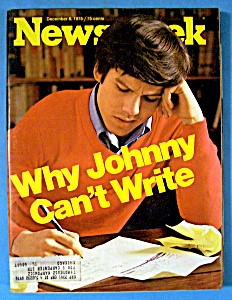By Erin Macri, @Erin_Macri
 With ease, we can all recall the moments in grad school that brought us to our knees. The red pen all over an assignment, an endless list of reviewer comments, a rejected manuscript, an unsuccessful application for funding. And no matter how successful we are, writing challenges resurface throughout our careers. A theme emerges: being a writer is traumatizing.
With ease, we can all recall the moments in grad school that brought us to our knees. The red pen all over an assignment, an endless list of reviewer comments, a rejected manuscript, an unsuccessful application for funding. And no matter how successful we are, writing challenges resurface throughout our careers. A theme emerges: being a writer is traumatizing.
I have just been reassured, I am not alone. Professor Anthony Paré, Department Head of Language and Literacy Education at UBC, says we are all wounded writers in some varied and unique way. So as we move into various careers in the academy, without formal education in teaching people to write, how do we support those we mentor? How do we avoid finding ourselves offering so much ‘feedback’ to a student that ‘authorship’ actually becomes ethically complicated? How do we reconcile a student’s short term career metrics with their long term career needs of becoming an independent writer?
At a recent workshop on writing for graduate supervisors, Paré offered some strategies to inspire your grad students to prioritize writing.
- Introduce meta-cognition. Students can be taught to develop awareness and skills for planning, reflecting on, and evaluating their own thought processes and writing. Novice writers may approach a manuscript by producing text from start to finish in a linear manner. Metacognition will help students think like an expert writer, producing a manuscript in a more iterative and non-linear process that includes concepts like idea development and contemplation. This approach might look less like a manuscript, and more like the words, circles and arrows seen on the back of a napkin in a moment of eureka.
- Move beyond ‘process writing’. The ability to form sentences and paragraphs is foundational on Maslow’s less-well-known hierarchy of writer’s needs. Brainstorming, free form writing, and five paragraph essays are of course basic requisites. For most of us, though, this is where our education ended. As readers we all know: structure and formula do not engage us, and do not tell a persuasive story. Explore with your students how writing and story-telling changes within the context of academia, and how this influences discourse.
- Explore your discipline as a unique subculture. What language do you speak in this culture? What thematic values emerge in your field? This can be explored within your department or faculty, and also within the broader national and international context. What can students learn about culture when reading key publications, or when attending meetings or conferences? What do they need to know about what goes into a pitch or a conversation in your discipline? Engage students in cultural contemplation. Every e-mail they send to an investigator is an opportunity to learn about writing for their subculture.
- From writer-based to reader-based writing. Most writers begin writing for themselves, according to Linda Flower. What have they learned, what do they think is interesting? This is a good place to start, and Paré encourages this style early in a manuscript. The time to transition to reader-based writing should happen later. Who is the end-user of your work, and how will they interpret what you have said, and use it? Are you writing for policy-makers, researchers, clinicians, or patients? Does the reader know the terminology of your discipline? Do they need an argument to be fleshed out to clearly connect a research finding to a clinical recommendation? Finally, the student needs to think of one additional reader: the reviewer. Mentors, consider advising students to look beyond the ‘author guidelines’ and read the reviewer guidelines so they understand how their manuscript is being evaluated.
- Pre-write. Write. Incubate. Re-write. Repeat. Before your student starts to write, have a discussion with them where you develop ideas, key points, and arguments. What is the important story your student wants to share? What is going to change peoples’ minds? Have them write a first ‘draft’. Then have them sit on that draft for a few days. Have them read and edit their own draft again after they’ve set it aside for a while, before submitting to you for feedback. This incubation period may be challenging for you both: in our fast-paced world, it will seem counterproductive to do nothing. Paré insists this time away from the writing will give a fresh perspective and new ideas that will ultimately create stronger arguments and better manuscripts.
- Concrete editing. Supervisors, edit for the ‘big picture’ early on – try to avoid correcting grammar and spelling mistakes too soon. Numerous nit-picky corrections early on can traumatize or paralyze a student. Also, try to give concrete feedback and avoid metaphors here. Telling them a paper needs more ‘flow’ or to ‘think outside the box’ may not provide the student with a clear idea of where she has gone astray or what needs changing. If a common theme emerges, give them the ‘rule’ to apply to their writing, rather than making the changes yourself. Accepting tracked changes will not effect change in your student.
**************************
Erin Macri, @Erin_Macri, is a physical therapist and PhD candidate at UBC.